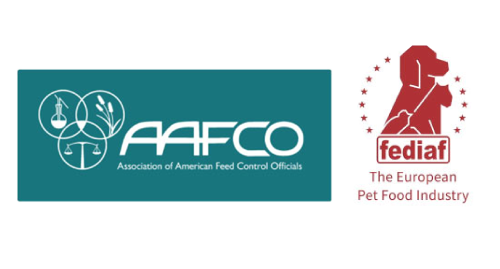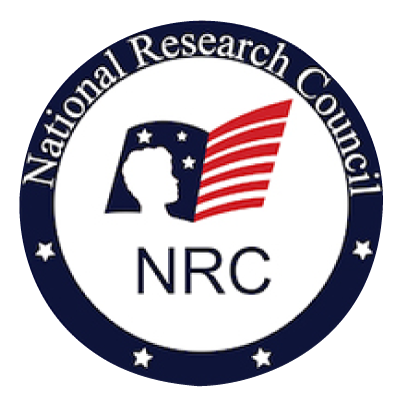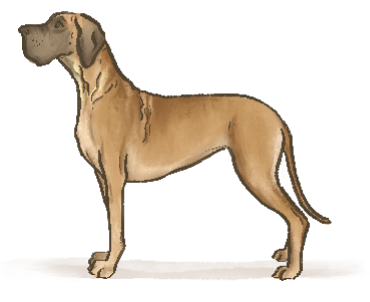Feeding Guides Explained

Most of us pet parents get very confused when it comes to finding the right way and quantity to feed our fur-babies. A clear and easy-to-follow feeding guide makes feeding time easier and ensures our pets are getting the nutrition they need, to suit the requirements of their specific life stage.
All commercially manufactured complete and balanced pet foods are legally required to provide a clear feeding guide for pet parents on the packaging of their food. The purpose and type of the pet-food will determine the details of the feeding guide on package; that means for example if the guide is based on life stages.
If you would like to understand more the intricate details of this important part of pet food labels, then this is the article for you.
Life stage differences
Feeding guides often change as our pets live through different life stages. Puppies grow quickly and need more energy to sustain this stage of their lives, which lasts until approximately 12 months of age, depending on their breed.
Adult dogs’ energy requirements generally decrease and plateau once they are fully grown. Exceptions here are for extremely active and working dogs as these animals require more fuel than the average adult pet. These dogs can use up to double the amount of energy a less active pet may require, so feeding amounts need to be adjusted accordingly.
Pregnancy and lactation are also life stages that require an increase in food to sustain the healthy growth of the litter as well as the health of the mother during this time.
Senior dogs generally start to slow down, and their caloric requirements decrease for this reason. Feeding less adult dog food, or in many cases, switching to a diet specifically developed for senior dogs is the best way to ensure they are getting the nutrition they need, without unnecessary calories they don’t require.
Some pet foods will create a one-size-fits all food and label different feeding amounts for the different life stages. Other pet food manufacturers will create different foods, specific to only one life stage.

The recognised life stages for both dogs and cats are:
• Pregnancy (Gestation)/Lactation
• Growing puppies or kittens (Growth)
• Adult dogs or cats (Maintenance)
• All life stages
What the authorities say
There are different models used to create feeding guides for pets, but certain standards must be followed for an Australian pet food to be compliant with the Australian standards for the manufacturing and marketing of pet food.
For an Australian pet food to be compliant with this standard, its feeding guide must comply with the guidelines outlined by one of the 2 recognised International Nutritional Publications.

The recognised International Nutritional Publications are either the American system outlined by AAFCO (American Association of Feed Control Officials) or the European system outlined by FEDIAF (European Pet Food Industry Federation).

Both authorities refer to the model that should be followed when determining how much of a pet food an animal should consume daily, depending on the stage of life of that animal, to sustain life and function. This model is based on the recommendations put forward by the National Research Council (NRC) in their 2006 publication on the Nutritional Requirements for Dogs and Cats; this resource being the accepted reference manual for the nutritional requirements of these companion animals.
This model looks at the various life stages of animals, their activity levels, and suggests the required calories needed in each of these instances. There are also recommendations for how much protein, fat, vitamins, and minerals are required for the different life stages which to varying degrees, contribute to the calories of the product, however the ultimate feeding guide calculation is a calorie-based model.
The required calories needed for a given life stage and activity level, and the calories of any given pet food, combine to ultimately inform the unique feeding guide for that particular product.
Easy enough to understand in theory, but this information can be expressed in different ways on pet food labels which often makes comparing one pet food, to another, very confusing.
Comparing Feeding Guides
ME = Metabolic Energy
ME - kJ vs kCal
The energy a pet food provides your pet is called Metabolic Energy (ME). ME can be labelled in kilojoules (kJ) or in kilocalories (kCal). These different ways to measure energy can’t be compared like for like because 1 kilocalorie = 4.18 kilojoules.
Neither of these terms is better than the other, it’s just important to know when comparing two pet foods and the energy they will provide your pet, that if one is listed in kJ and the other in kCal, you’ll need to convert one, to the other by either multiplying or dividing by 4.18 so you’re comparing apples with apples.
ME - DM vs As Fed
The information available on commercial pet food labels will either be provided “As Fed” or on a “Dry Matter (DM) Basis” and energy is no exception here. Fresh food contains moisture which is naturally occurring due to the nature of using fresh unprocessed ingredients. Any food listed on a DM basis is stating the nutritional information with water (moisture) content, not included. These foods will look a lot higher in nutrition and calories as a consequence of this.
Neither of these expressions are right or wrong, it’s just something to be aware of when comparing two pet food products because food labelled “as fed”, especially if it’s a fresh pet food product naturally high in moisture, will looks like it contains a lot less nutrition than a product that is stating its nutrition on a DM basis.
Wet vs Dry food. High moisture content = feed more
Much like the above point, different types of pet food diets contain different moisture levels naturally and this impacts the amount of food required to consume, to get the required nutrition from that meal.
- Dry food contains approximately 3 – 10% moisture
- Canned food contains approximately 60 – 80% moisture
- Cooked food (such as dog rolls and meatballs) contains approximately 60 – 65% moisture
- Fresh raw food contains approximately 70 – 80% moisture

If a pet were consuming an entirely dry food diet, they would eat a lot less volume of food, than they would if they were eating a raw food diet. Essentially the higher the natural moisture content of a pet food, the more of it, a pet needs to consume to get the nutrition they need.
The benefits of feeding a high-moisture diet not only include increased satisfaction at mealtime (what dog doesn’t want to eat more food each meal) but also it’s rehydration benefits. Consuming a diet high in moisture means that the pet doesn’t need to voluntarily drink as much water to maintain their hydration. This is especially beneficial for kidney health in cats as cats are not naturally inclined to drink the volumes of water they need to stay hydrated, especially to counter the dehydrating effects of an entirely dry food diet.
Incorporating treats
Complete and balanced pet food provide feeding guides but treats more often than not, don’t. This puts the onus onto the pet owner to treat responsibly and to understand that treats aren’t calorie free.
If you do a lot of training with your pet and find you are giving them lots of treats, you may want to cut their meal portions back a little, if you start to see or feel them putting on too much weight.
Do keep in mind that replacing complete and balanced pet nutrition, with treats, shouldn’t make up more than 20% of the overall diet as your pet may start missing out on important nutrients included in complete and balanced pet foods that often aren’t included in treats.
When to deviate from the recommendations
When it comes to feeding guides, there are times when the right thing to do is to deviate from the feeding guide on pack. The first is the above point on responsible treating. Another would be if you have a dog that looks / feels underweight or overweight and you manually adjust feeding amounts to keep them within a healthy weight range and body condition. A third would be when you’re vet or canine nutritionist recommends different feeding advice when your pet is being treated for a specific health goal under their care.
A note on giant breeds

Giant breed dogs have unique nutritional needs when it comes to feeding and there are commercial brands of dog food that are specially designed to meet their needs.
One of these is a slightly lower calcium level in the food when compared with the requirements for other breeds. Another is ensuring they get the right amount of calories, especially while growing, and not overconsume calories as this can lead to skeletal deformities.
For commercial dog foods that are not specifically designed for giant breeds, the standards dictate that unless a food states that it is for another purpose (i.e. puppy food for small breeds), all other foods should comply to the nutritional needs of giant breeds so they can consume these foods safely.
Individual variation
For all the science and standards that go into commercial pet foods, it’s worth remembering that animals are individuals, and no feeding guide will be perfect for every pet, all the time. Pets have unique and varied metabolic needs and this will impact their nutritional requirements. The look and feel of your pet, is the best way for you to judge if they are being overfed, or if they require more calories. Refer to this article, on how to determine if your pet is at a healthy weight based on look and feel.
Most pet food labels, for this reason, will clearly state that their feeding guide is just a guide because optimal feeding guides can vary with age, size, breed, activity level and climate.
References
1. https://europeanpetfood.org/wp-content/uploads/2022/03/Updated-Nutritional-Guidelines.pdf
2. https://talkspetfood.aafco.org/rightpetfood
3. Standards Australia (2017). Australian standard 5812-2017. Manufacturing and marketing of pet food.
4. National Research Council. 2006. Nutrient Requirements of Dogs and Cats. Washington, DC: The National Academies Press. https://doi.org/10.17226/10668.
